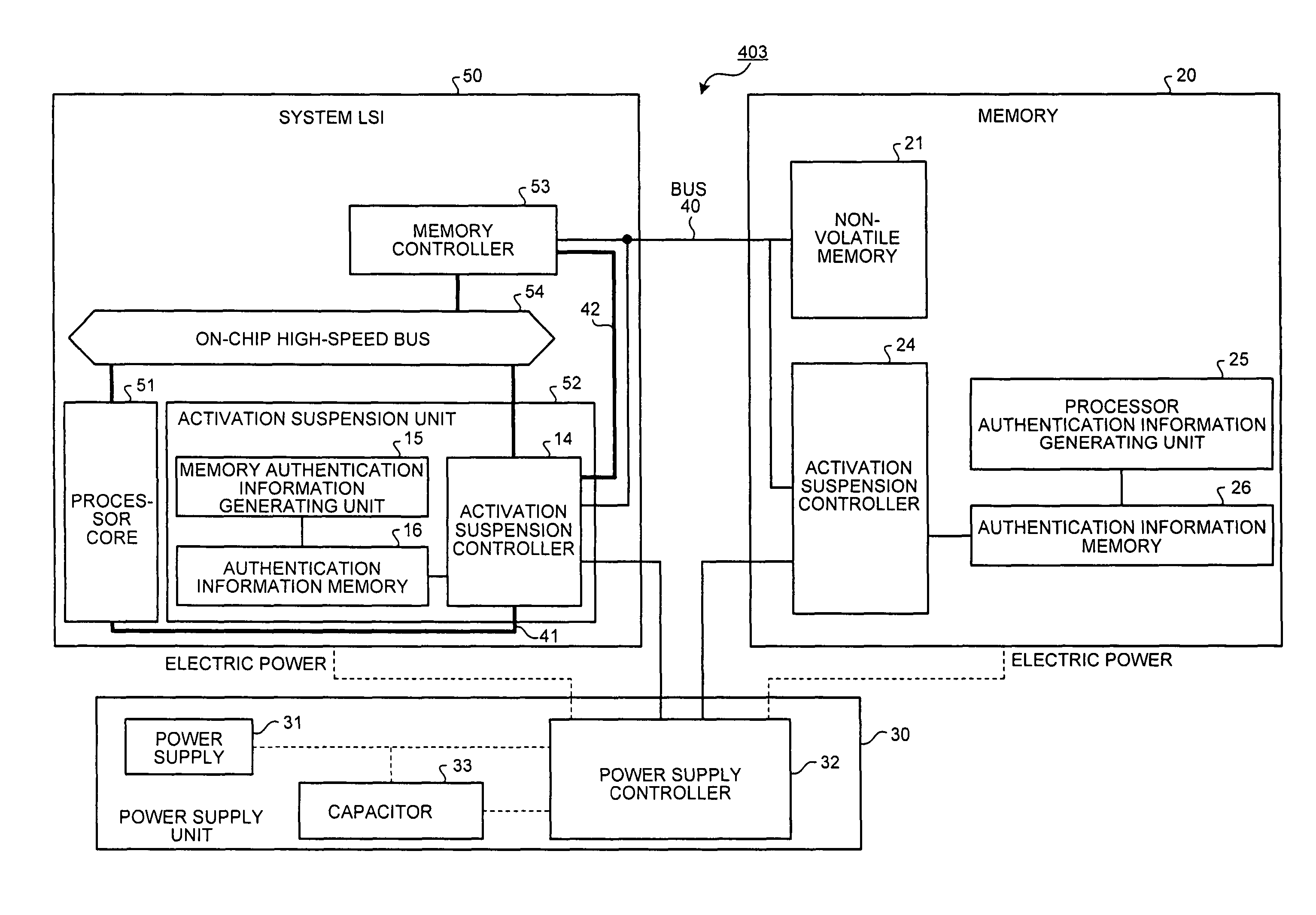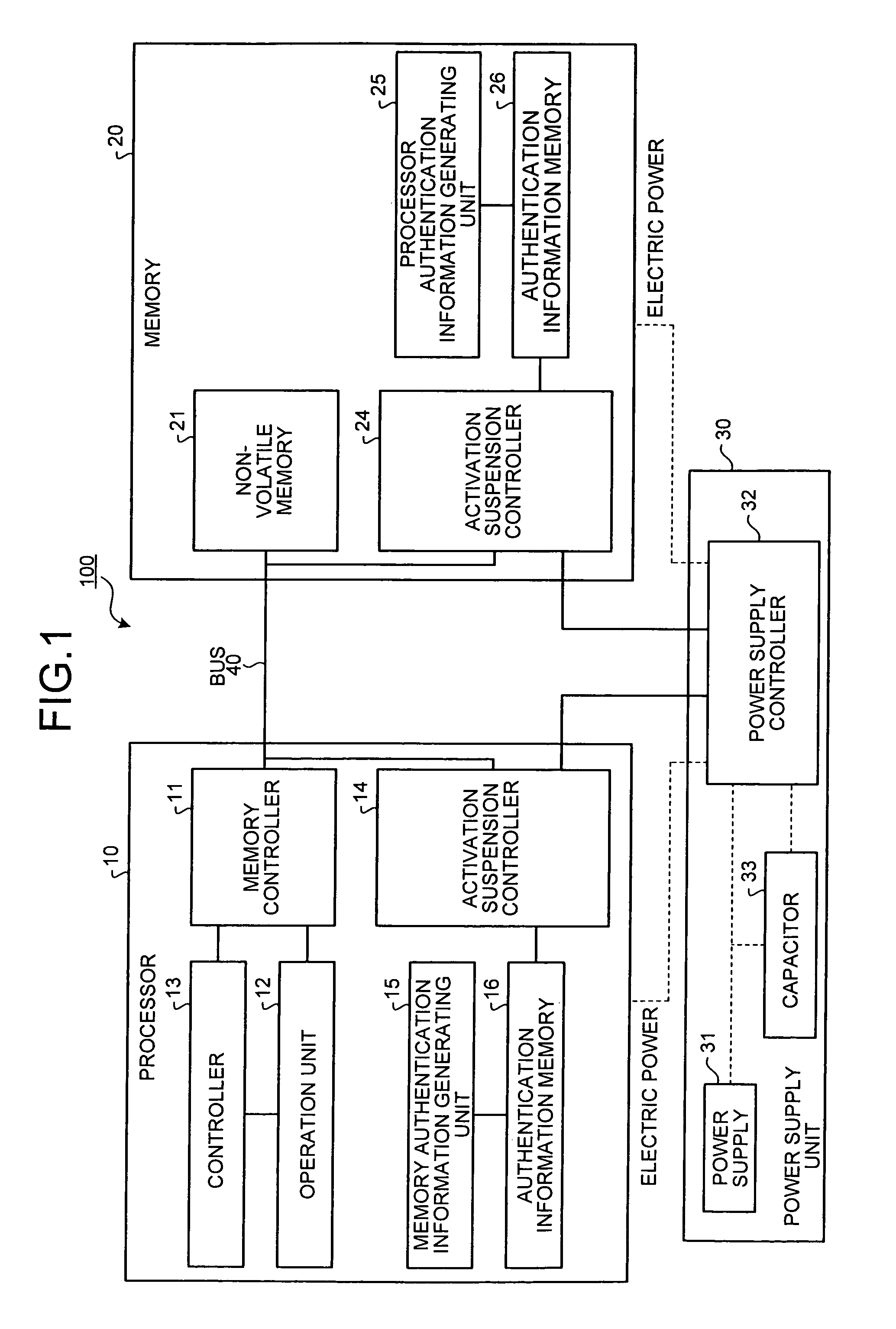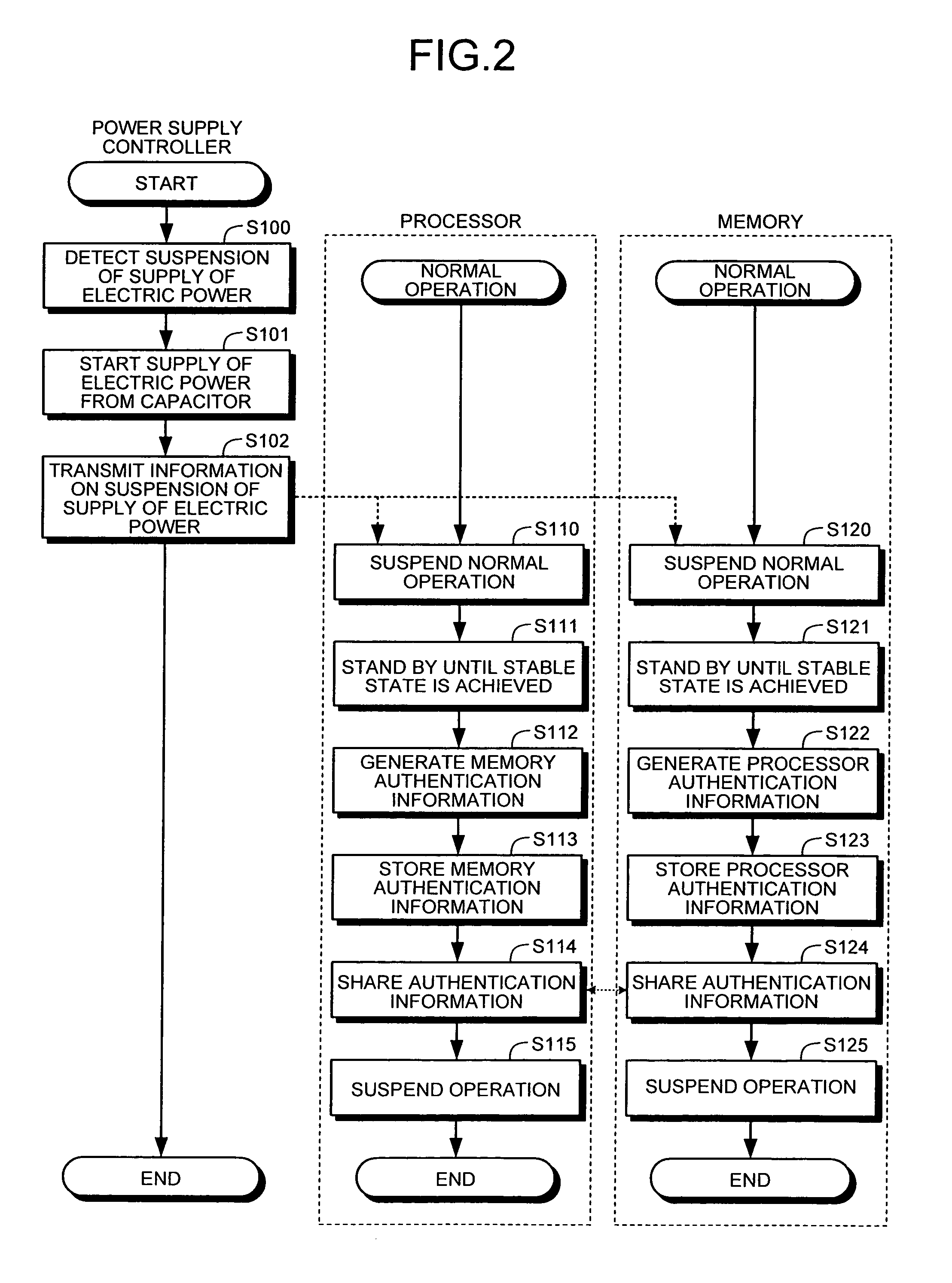Processor, memory, computer system, system LSI, and method of authentication
a technology of computer system and authentication method, applied in the field of authentication method, can solve problems such as illegal copying of decrypted contents, user might commit illegal acts, and alteration of device and system,
- Summary
- Abstract
- Description
- Claims
- Application Information
AI Technical Summary
Benefits of technology
Problems solved by technology
Method used
Image
Examples
first embodiment
[0040]FIG. 1 is a diagram of an overall structure of a computer system 100 according to a The computer system 100 includes a processor 10, a memory 20, a power supply unit 30, and a bus 40.
[0041]The processor 10 includes a memory controller 11, an operation unit 12, a controller 13, an activation suspension controller 14, a memory authentication information generating unit 15, and an authentication information memory 16. The memory controller 11 reads out a program or data from the memory 20, and writes data into the memory 20. The operation unit 12 has a register to temporarily store data. The operation unit 12 acquires data from the memory 20 and processes data with the use of the register. The controller 13 manages the execution of a program on the operation unit 12.
[0042]The activation suspension controller 14 performs processing at the start-up and the suspension of the operation of the processor 10. More specifically, the activation suspension controller 14 manages the memory...
second embodiment
[0097]The activation suspension controller 14 acquires the processor authentication random number generated by the processor authentication random number generator 27 from the activation suspension controller 24 to store the same in the processor authentication random number memory 19. The activation suspension controller 24 acquires the memory authentication random number generated by the memory authentication random number generator 17 from the activation suspension controller 14 to store the same in the memory authentication random number memory 29. In the second embodiment, the memory authentication random number and the processor authentication random number are utilized as the authentication information.
[0098]The memory authentication random number generated by the memory authentication random number generator 17 and the processor authentication random number generated by the processor authentication random number generator 27 are preferably of 40 bits or 128 bits in length (b...
third embodiment
[0135]Still alternatively, though in the third embodiment the activation suspension controllers 14 and 24 perform the exchange of the authentication information according to the instruction from the power supply controller 32, the processor 10 may determine the timing of the exchange of the authentication information.
[0136]FIG. 11 is a flowchart of the suspension process which is performed when the power supply stops in the computer system 300 according to the third embodiment. In the computer system 300 according to the third embodiment, the exchange of the processor authentication information and the memory authentication information is already completed during the normal operation. Hence, on receiving the instruction of the pre-suspension process from the power supply controller 32, the processor 10 and the memory 20 each stop the normal operation (step S110, step S120), and after achieving the stable state (step S111, step S121), stop the operation (step S115, step S125). Thus, ...
PUM
 Login to View More
Login to View More Abstract
Description
Claims
Application Information
 Login to View More
Login to View More - R&D
- Intellectual Property
- Life Sciences
- Materials
- Tech Scout
- Unparalleled Data Quality
- Higher Quality Content
- 60% Fewer Hallucinations
Browse by: Latest US Patents, China's latest patents, Technical Efficacy Thesaurus, Application Domain, Technology Topic, Popular Technical Reports.
© 2025 PatSnap. All rights reserved.Legal|Privacy policy|Modern Slavery Act Transparency Statement|Sitemap|About US| Contact US: help@patsnap.com



